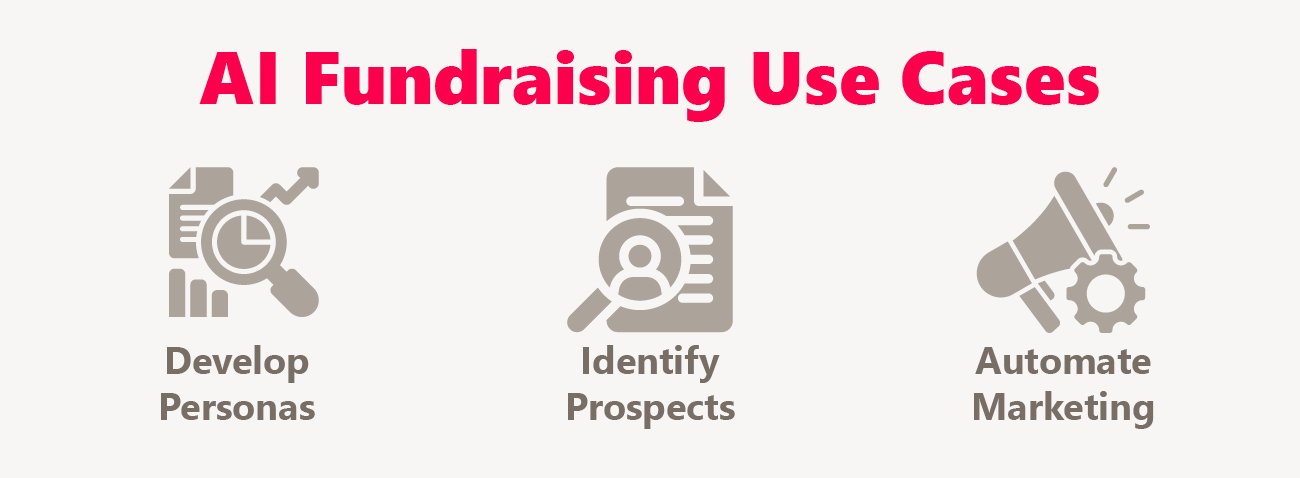
With the rise of AI tools, it’s no surprise that software providers have developed AI solutions to make the fundraising process more efficient for nonprofits. If your nonprofit has started researching these tools, you need to know how to balance AI fundraising tools and donor trust.
According to the 2022 Giving Experience Study, trust is the number one motivator when supporters are deciding whether to donate to an organization. Your AI fundraising strategy should prioritize keeping donors’ information secure to maintain positive relationships.
In this guide, we’ll cover a few ways you can use AI for fundraising. Then, we’ll dive into three best practices for keeping your donors’ trust while using these tools. Whether you’re already using AI tools or looking to invest in a new solution, this guide will prepare you for communicating about it with your donors.
Table of Contents
Ways to Use AI for Fundraising
If you’re unfamiliar with AI tools, you might be wondering how they can help you with your fundraising processes. According to BWF, they can make your work more efficient by helping you:

- Develop personas. Use AI tools to identify shared characteristics of your most engaged supporters and craft ideal supporter personas based on those characteristics. This practice will inform your marketing strategies, allowing you to create more targeted messages. For example, you might find that a large portion of your supporters are Gen Z and prefer communication through social media. In that case, you can create social media content that better fits their interests.
- Identify prospects. Prospect identification tools allow your nonprofit to determine which individuals are potential major donors or potential legacy or planned donors. You can also use these tools to identify smaller donors who are likely to upgrade or renew their giving to increase fundraising.
- Automate marketing. On top of developing personas to make marketing easier, AI tools can also help you automate your marketing processes to reduce staff workload. With the help of AI, you can send supporters messages through their preferred channels and with their preferred frequency.
Additionally, you can plan for your nonprofit’s future with predictive analytics. Fundraising predictive analytics (also known as predictive modeling) allows you to assess your nonprofit’s data to make predictions. With the right tool, you’ll be able to model future donor behavior, helping you prepare for new trends and changes within your donor base.
Best Practices for Balancing AI Tools and Donor Trust
Although AI tools can greatly improve your nonprofit’s fundraising processes, the reality is that there’s still a general suspicion toward them. People are naturally resistant to change—just think about the hesitancy about cryptocurrency, for example. And, society has been inundated with years and years of popular media touting the view that AI is untrustworthy or even evil, from The Matrix to The Terminator to I, Robot.
All that is to say that it’s normal for donors to feel hesitant and suspicious about nonprofits using AI tools, especially if their data is involved. It’s up to you to educate them about your AI tools and to make them feel comfortable with them. Here are three best practices for doing that:
1. Approach AI tools as a supplement.
When implementing any new software solution or tool, you may be tempted to completely pivot away from old tools the moment the new one works. However, that’s not the best approach to take when it comes to AI.
For example, let’s consider the healthcare industry, which is experimenting with AI-based transcription technology to assist with patient medical notes and disease history. Research estimates that AI’s error rate is up to 23.31% in this scenario, with human transcribers greatly outperforming AI. In this scenario, it’s worse for healthcare professionals to rely on AI tools rather than human transcribers.
Although inaccuracy in the nonprofit sector usually doesn’t have the medical consequences that it might have in the healthcare industry, that doesn’t mean that your nonprofit should consider AI errors acceptable. Instead of allowing AI tools to replace existing software or staff members, think of them as a supplement instead. Consider AI tools as support tools—be sure to check over its work and ensure that it’s accurate.
For example, if you ask an AI tool to brainstorm an annual fundraising calendar for your nonprofit, double-check to make sure that the events it plans make sense for your organization. Instead of blindly accepting the AI’s suggestions, thoughtfully consider them as though they were brought to you by an employee. That way, your organization will maintain trust with donors by verifying information.
2. Use tools that don’t need donor data.
Many individuals are protective of their information and may react negatively if told that their information is being fed to AI tools to help with fundraising. If that’s a concern for your nonprofit, consider using AI tools that don’t require donor data.
Content generation tools are a helpful type of AI for nonprofits that don’t need donor data. A few examples of this type of tool include:
- Grammarly. While Grammarly is well-known for its spellcheck and grammar-checking features, it also offers AI writing and text generation tools to aid you in creating high-quality and relevant written content.
- ChatGPT. This generative AI tool took the world by storm on its release. It mainly helps generate text content, but also has image and visual generation features as well.
- Canva. With Canva’s AI features, you can produce AI-generated images and art with text prompts. Plus, input media and transform it into customized templates that you can use for your needs.
Content generation tools can greatly reduce your nonprofit’s staff members’ manual workloads. Use these solutions to generate infographic ideas, social media post templates, and email newsletter drafts to make marketing easier than ever. Or, use them to adjust the copy on your nonprofit’s website to create a strong, united brand voice.
Let’s consider personalized email outreach as an example, specifically donor thank-you emails. According to eCardWidget, there are six essential elements of these emails:
- Subject line
- Gift amount
- Donation impact
- Engaging visuals
- Call to action
- Signature
Use text content generation tools like Grammarly and ChatGPT to create a thank-you email template, with spaces you can fill in for gift amounts. Then, make your emails more compelling by using AI to brainstorm engaging visuals and creative twists on your subject line and call to action. Remember to review the generated text and images for any errors to ensure that you deliver a high-quality and engaging message to your supporters.
3. Be transparent about tools that use donor data.
You should be completely transparent about using any tools that require donor data because supporters are entitled to know how you’re going to use their information. Additionally, be sure to align with your legal team to ensure that all of your AI policies comply with relevant local, national, and international regulations.
Here are a few ways to be transparent about your AI fundraising tools:
- Proactively inform donors. Don’t wait until after you’ve added their data to your database to let donors know that you plan to use their information within AI tools. Consider adding a short FAQ section to your donation form explaining how and why you use donor data. Let your supporters know how your use of AI tools allows you to fundraise more efficiently, which ultimately drives greater support toward your mission. Be sure to add a link to your privacy policy where donors can view your full data collection and usage policy.
- Create a privacy policy. A privacy policy should contain information about how your organization collects and uses donor and supporter data. It should also outline how to opt out, how and when changes to the policy go into effect, and the security measures your nonprofit uses. Here’s an example of a privacy policy from the World Wildlife Fund.
- Give donors the option to opt out. Just as donors are given the option to opt out of future communications, give them the option to opt out of their data being used with your AI tools. Add this option to the bottom of your donation form alongside an explainer, such as: “We may share your personal data with AI tools to help us better connect with you. If you do not want us to share your information, please opt out here.”
- Data security and privacy. Nonprofit cybersecurity is extremely important, as you handle sensitive data including donor information and financial transactions. Thoroughly research the AI fundraising tools you use to ensure that they are safe and compliant with information security regulations. Review your software provider’s core principles and ethics, data privacy procedures, and terms to ensure they align with your nonprofit’s policies and values.
You might also consider publishing a blog post about your AI fundraising tools on your nonprofit’s website. This will allow you to transparently share information about the AI tools you use in a single, centralized location. Take the opportunity to acknowledge your donors’ fears and reassure them about the safety of their information.
Choosing to implement AI fundraising tools is a delicate matter for nonprofits, as it’s imperative to retain donor trust while doing so. Regardless of whether you’ve already taken the plunge or if you’re still considering it, remember to inform your supporters about any changes. While it’s inevitable that some supporters may not want to be involved, the vast majority will appreciate your transparency and will trust that your nonprofit will keep them in the loop in the future.
